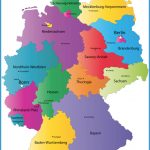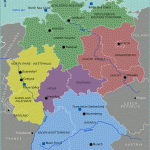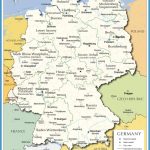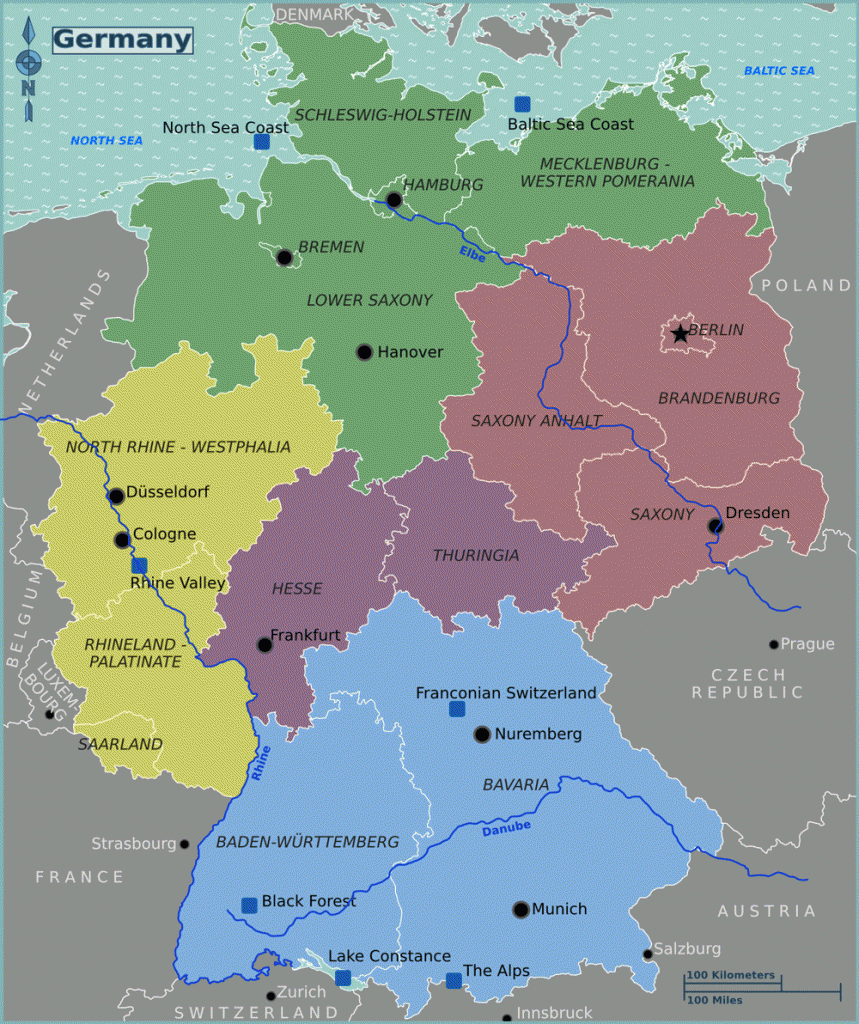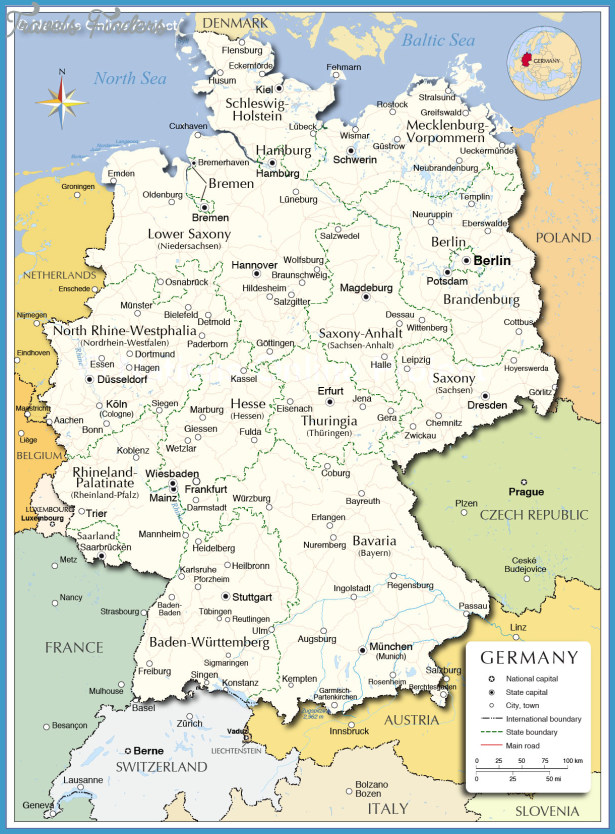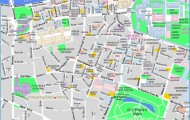German Map
OCCUPATION AND DIVISION (1945-1949). In July 1945, the United States, Great Britain, and the Soviet Union met at Potsdam to partition Germany into zones of occupation: The east under the Soviets, the west under the British and Americans, and Berlin under divided control. The Allied program for the Occupation democratization, demilitarization, and de-Nazification proceeded, but growing animosity between the Soviets and the Western Allies made joint control of Germany increasingly difficult. In 1947, the Allies merged their occupation zones into a single economic unit and began to rebuild a market economy with huge cash infusions under the American Marshall Plan. East and West Germany became increasingly distant, especially after the Western Allies introduced the Deutschmark into their zones.
THE FEDERAL REPUBLIC OF GERMANY (1949-1989). The Federal Republic of Germany (Bundesrepublik Deutschland) was established as the provisional government of Western Germany on May 24, 1949. Basic Law safeguarded individual rights and established a system of freely elected parliamentary assemblies. One of the most visionary paragraphs established a Right of Asylum, guaranteeing refuge to any person fleeing persecution.
As the only party untainted by the Third Reich, the Social Democratic Party seemed poised to dominate postwar German politics, but the Christian Democratic Union (CDP) provided some competition by uniting Germany’s historically fragmented conservatives and centrists under a nondenominational platform. With former Cologne mayor Konrad Adenauer at the helm, the CDU won a small majority of seats in the Federal Republic’s first general election. As chancellor, Adenauer unflaggingly pursued the integration of Germany into a unified Europe; West Germany was aligned with NATO (North Atlantic Treaty Organization) in 1955 and became one of the charter members of the European Economic Community (later the European Union) in 1957. Speedy fiscal recovery secured the future dominance of the CDU party. In 1982, Christian Democrat Helmut Kohl became chancellor and pursued a policy of welfare state cutbacks, tight monetary policy, and military cooperation with the US.
MEANWHILE IN THE GERMAN DEMOCRATIC REPUBLIC. In spite of pledges to the contrary, the Soviets stopped holding free elections in their sector by 1949. On October 7, 1949, they declared the establishment of the German Democratic Republic, with the national capital in Berlin. Constitutional promises of civil liberties and democracy were empty: East Germany became unquestion-ingly subservient to the Soviet Union. The Stasi, or secret police, maintained a network of agents that strove to monitor every citizen from their headquarters in Berlin (437) one in seven East Germans was a paid informant.
Many East Germans chose to escape oppression by emigrating to West Germany. By 1961, more than three million had illegally crossed the border, and the East German government decided to stop the exodus of young skilled workers. Overnight on August 12, the first barriers of the Berlin Wall were laid, and barbed wire and guns dissuaded further attempts to escape, making for a confusing and dangerous barrier between the two halves.
REUNIFICATION (1989). When Mikhail Gorbachev took the helm of the USSR in 1985, liberalizing reform spread throughout the Eastern Bloc under his policy of glasnost (openness). East Germany, however, remained under tight control. The turning point came in May 1989 when Hungary dismantled its barbed-wire border with Austria, giving East Germans an escape route to the West. In October, Gorbachev announced that the USSR would not interfere with East Germany’s domestic affairs, and citizens began to demand free elections, freedom of press, and freedom of travel. The entire East German government resigned on November 8, and a day later, a Central Committee spokesperson announced the opening of all borders to the West.
The destruction of the Wall was the most symbolically significant event for Germans since the end of WWII. The signing of the Four-Plus-Two Treaty by the two Ger-manies and the four occupying powers on September 12,1990, signaled the end of a divided Germany. On October 3, 1990, the Allies forfeited their occupation rights, East Germany ceased to exist, and Germany became one united sovereign nation for the first time in 45 years. However, East and West Germany did not come together on equal terms. The collapse of East Germany’s inefficient industries and institutions led to massive unemployment and the Federal Republic’s worst-ever recession. Many Westerners resented the inflation and taxes brought on by reunification, while Easterners missed the generous social benefits that Communism had afforded them. Economic frustrations led to the scapegoating of foreigners, especially asylum-seekers from Eastern Europe and immigrant workers. Thankfully, violence has decreased greatly over the past few years.

